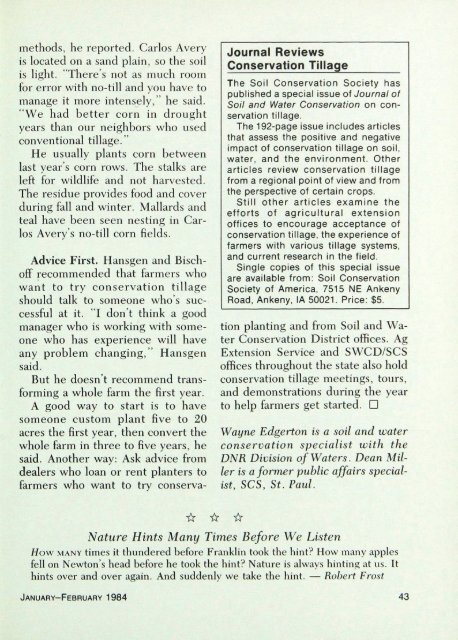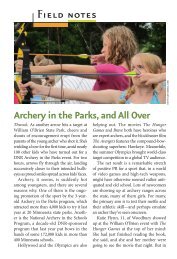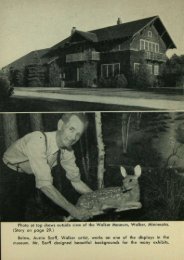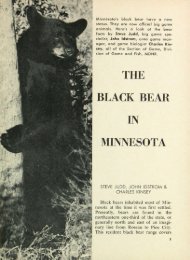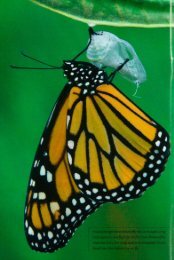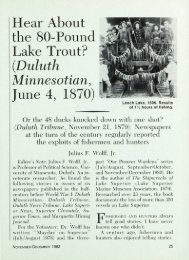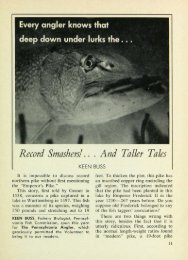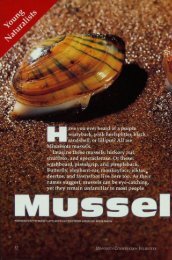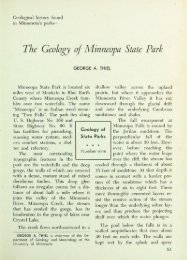364 Conservation Tillage Challenges the Moldboard Plow - webapps8
364 Conservation Tillage Challenges the Moldboard Plow - webapps8
364 Conservation Tillage Challenges the Moldboard Plow - webapps8
- No tags were found...
You also want an ePaper? Increase the reach of your titles
YUMPU automatically turns print PDFs into web optimized ePapers that Google loves.
methods, he reported. Carlos Averyis located on a sand plain, so <strong>the</strong> soilis light. "There's not as much roomfor error with no-till and you have tomanage it more intensely, he said."We had better corn in droughtyears than our neighbors who usedconventional tillage.He usually plants corn betweenlast year's corn rows. The stalks areleft for wildlife and not harvested.The residue provides food and coverduring fall and winter. Mallards andteal have been seen nesting in CarlosAvery's no-till corn fields.Advice First. Hansgen and Bischoffrecommended that farmers whowant to try conservation tillageshould talk to someone who's successfulat it. "I don't think a goodmanager who is working with someonewho has experience will haveany problem changing," Hansgensaid.But he doesn t recommend transforminga whole farm <strong>the</strong> first year.A good way to start is to havesomeone custom plant five to 20acres <strong>the</strong> first year, <strong>the</strong>n convert <strong>the</strong>whole farm in three to five years, hesaid. Ano<strong>the</strong>r way: Ask advice fromdealers who loan or rent planters tofarmers who want to try conserva-Journal Reviews<strong>Conservation</strong> <strong>Tillage</strong>The Soil <strong>Conservation</strong> Society haspublished a special issue of Journal ofSoil and Water <strong>Conservation</strong> on conservationtillage.The 192-page issue includes articlesthat assess <strong>the</strong> positive and negativeimpact of conservation tillage on soil,water, and <strong>the</strong> environment. O<strong>the</strong>rarticles review conservation tillagefrom a regional point of view and from<strong>the</strong> perspective of certain crops.Still o<strong>the</strong>r articles examine <strong>the</strong>efforts of agricultural extensionoffices to encourage acceptance ofconservation tillage, <strong>the</strong> experience offarmers with various tillage systems,and current research in <strong>the</strong> field.Single copies of this special issueare available from: Soil <strong>Conservation</strong>Society of America. 7515 NE AnkenyRoad, Ankeny, IA 50021. Price: $5.tion planting and from Soil and Water<strong>Conservation</strong> District offices. AgExtension Service and SVVCD/SCSoffices throughout <strong>the</strong> state also holdconservation tillage meetings, tours,and demonstrations during <strong>the</strong> yearto help farmers get started. •Wayne Edgerton is a soil and waterconservation specialist with <strong>the</strong>DNR Division of Waters. Dean Milleris a former public affairs specialist,SCS, St. Paul.-fr -fr ftNature Hints Many Times Before We ListenHow MANY times it thundered before Franklin took <strong>the</strong> hint? How many applesfell on Newton's head before he took <strong>the</strong> hint? Nature is always hinting at us. Ithints over and over again. And suddenly we take <strong>the</strong> hint. — Robert FrostJANUARY-FEBRUARY 1984 43


